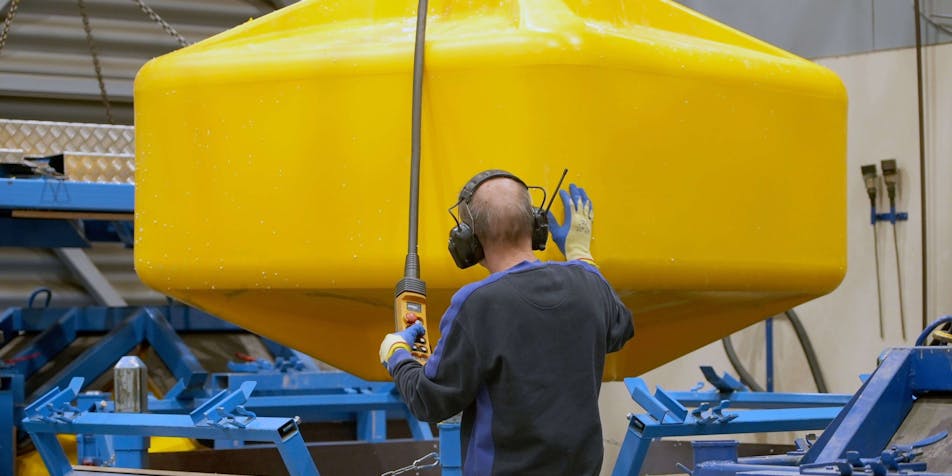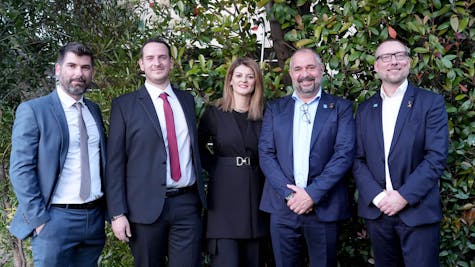Floating offshore wind can create 52,000 new jobs in Norway

Photo: Arne Vatnøy/Norwegian Offshore Wind
A new report from Menon Economics shows that floating offshore wind can be one of Norway's most important job creators in 2050 if we set the pace.
The report states that the industry around floating offshore wind alone can create over 52,000 jobs in 2050. This corresponds to about 25 percent of the total employment in the oil industry back in 2019.
- The expertise we have in floating offshore technology due to oil and gas has given the Norwegian supply industry a heads start. We are already well equipped, and in the process of a competence transfer. It is great to see that this report shows such a large potential in employment, says leader of Norwegian Offshore Wind, Arvid Nesse.
The recent report points to a rapid growth in the global market for floating offshore wind. Norway has been a pioneer in floating technology, and the report shows that floating offshore wind can play a key role in the restructuring of the Norwegian offshore industry.
The report states that the industry around floating offshore wind alone can create over 52,000 jobs in 2050. This corresponds to about 25 percent of the total employment in the oil industry back in 2019.
- The expertise we have in floating offshore technology due to oil and gas has given the Norwegian supply industry a heads start. We are already well equipped, and in the process of a competence transfer. It is great to see that this report shows such a large potential in employment, says leader of Norwegian Offshore Wind, Arvid Nesse.
The recent report points to a rapid growth in the global market for floating offshore wind. Norway has been a pioneer in floating technology, and the report shows that floating offshore wind can play a key role in the restructuring of the Norwegian offshore industry.
The investment needs a higher pace
Menon has looked at floating offshore wind in isolation, because Norway has special advantages here, compared to bottom-fixed offshore wind. The survey shows that Norwegian players can take a market share of between 5 and 14 percent of the global floating market. According to the report, to achieve the upper range, we must quickly build up a solid industry at home in Norway.
- I think we can do that. The government has set a clear ambition for the offshore wind investment in Norway, and the supplier industry is ready to start, says Nesse, but adds:
- Legal and financial clarifications are still lacking. The industry is united in contributing knowledge, research and expertise to decision-makers here, says Nesse.
The pace of allocation of areas on the planned floating offshore wind farm Utsira Nord must therefore increase, to ensure a domestic market where Norwegian companies can provide services. The report shows that several countries around us have now come further with their floating projects and have clearer goals of building offshore wind farms quite soon.
Good advantages in global competition
The world's first floating offshore wind turbine is Norwegian, and in operation at the METCentre test center outside Karmøy. According to the report, Norway's lead in liquid technology has given us good competitive advantages. A good collaboration between research environments and industry has also been highlighted as an advantage. We are at the forefront of testing and development.
-Through testing of turbines at METCentre, we gain valuable insight and data on the impact on marine life, birds, operation and installation. Testing is essential to reduce costs of floating offshore wind, says Nesse.
Norwegian companies have high competence, technological insight and quality of the products. The fact that we have large sea areas that are deep means that floating technology is well suited for the Norwegian continental shelf. Menon has calculated that Norwegian players can turn over up to NOK 96 billion in 2050, just from floating offshore wind.
Menon's economists have thus studied jobs, industrial ripple effects, global market development and export potential. The assignment has been given by Norsk Industri, Norwegian Offshore Wind, Innovation Norway, the Norwegian Shipowners' Association, GCE Ocean Technology and GCE Node / Fremtidens Havvind.
Related articles
Join our newsletter
Get weekly updates from the industry and other Norwegian Offshore Wind content
Sign up here

